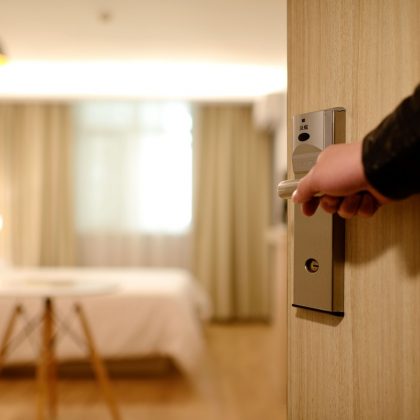How Culture Shapes Shared Decision-Making in Psychiatry: Insights from 751 Psychiatrists Across Europe
Imagine you’re a psychiatrist sitting across from a patient. You’ve diagnosed them, you’ve outlined the treatment options, and now it’s time to decide what to do next. Do you take the lead and make the call? Or do you involve the patient in deciding together? Your answer might be impacted by certain cultural orientations.
Shared decision-making (SDM) is a collaborative approach where clinicians and patients jointly decide on the best course of action. It’s increasingly recognised as a gold standard in healthcare, associated with better patient outcomes, reduced hospital admissions, and enhanced human rights protections. But while much research has explored patient preferences for SDM, the cultural factors shaping clinicians’ own preferences have received far less attention.
Our recent study, now published in European Psychiatry, addresses this gap. We surveyed 751 psychiatrists and trainees from 38 countries in Europe, asking how actively they believe patients should be involved in clinical decisions. We then explored whether national cultural values, based on Hofstede’s well-established cultural dimensions, could help explain variations in their responses.
The findings reveal a striking pattern: Even across Europe, culture shapes preferences within the limits set by the system.
What We Did
The study formed part of the European Psychiatric Association’s Ambassadors Survey. Respondents completed the Clinical Decision-Making Style–Staff (CDMS-S) scale, which measures clinicians’ preference for patient involvement in treatment decisions. We then linked their responses to Hofstede’s cultural scores for their respective countries.
Hofstede’s Six Cultural Dimensions are a framework widely used in cross-cultural research. This framework describes the prevailing values within societies.
- Individualism vs Collectivism: the extent to which people see themselves as independent individuals versus part of a close-knit group.
- Power Distance: the degree to which inequality and hierarchy are accepted in society.
- Indulgence vs Restraint: the extent to which people freely express desires and enjoy life versus suppress gratification through strict norms.
- Uncertainty Avoidance: how comfortable people are with ambiguity and risk.
- Long-term vs Short-term Orientation: whether a society prioritises future rewards (long-term planning) or immediate results and traditions.
- Success-Drivenness vs Quality-of-Life Orientation: the extent to which a society values achievement and competition versus well-being and cooperation.
Using statistical models that accounted for country-level clustering and professional differences, we tested which cultural values were associated with higher (or lower) preference for SDM.
What We Found
In simple, unadjusted models, all six cultural dimensions were significantly associated with SDM preferences. But after controlling for professional and systemic variables (such as clinician training and health system expenditure) only three dimensions remained significant. In countries like the UK, Netherlands, and Ireland, where individual autonomy is culturally prized, psychiatrists were more likely to endorse shared decision-making. Similarly, indulgent cultures (that value enjoyment, freedom, and self-expression) such as Sweden and the Netherlands, also leaned toward more collaborative decision-making. In contrast, in countries where hierarchy and authority are more accepted, such as Russia, Serbia, and Slovakia, clinicians were less likely to favour patient involvement, preferring a more directive approach.
These associations were statistically significant but modest. Notably, in fully adjusted models that included economic and healthcare funding differences, none of the cultural effects remained significant. This suggests that while culture shapes attitudes, system-level factors often shape practice.
Why This Matters
These findings help bridge a persistent gap in SDM research. While we’ve long known that patient preferences vary across cultures, clinician preferences have been underexplored. Yet psychiatrists are central decision-makers in mental healthcare. Their openness to collaboration directly affects whether SDM is practiced or not.
Our findings also caution against “one-size-fits-all” approaches to promoting SDM. In high Power Distance cultures, where hierarchy is expected, SDM may not resonate unless it’s adapted to fit social expectations. In more collectivist settings, decisions may need to involve family members, not just the individual patient. And in cultures with low indulgence, where restraint and modesty are valued, clinicians may need training to feel comfortable inviting patients to express preferences.
As Europe becomes more culturally diverse for various reasons such as increasing migration and mobility among healthcare professionals, understanding these dynamics becomes essential for effective, compassionate care.
Implications for Practice
Embedding SDM into psychiatry training across Europe is vital, but such training must be sensitive to cultural norms. For example, role-play exercises and communication strategies might need to be tailored differently in Austria, where Power Distance is relatively low in Europe, compared to Serbia, where hierarchical relationships are more strongly embedded relative to many European countries. Without this cultural adaptation, training risks feeling out of step with everyday practice.
Policies that aim to promote SDM also need to go beyond awareness campaigns and actively address structural enablers and barriers. Our findings indicate that institutional factors such as the amount of time psychiatrists can spend with patients or the level of funding allocated to mental health services, may influence SDM practice more directly than cultural values alone. Sustainable progress therefore requires investment in system-level change alongside advocacy.
In addition, patient expectations play a crucial role in how SDM is received and implemented. In some cultural contexts, patients may prefer that doctors take the lead in making decisions, seeing this as a mark of professionalism and trust. In such cases, clinicians may need to gradually build understanding and confidence around the idea of SDM, framing it not as an obligation, but as an opportunity for patients to have a voice in their care.
Looking Ahead
This is one of the first large-scale studies to empirically link cultural values to psychiatrists’ SDM preferences using a validated theoretical framework. But it’s just the beginning.
Future research should explore how these preferences translate into actual clinical behaviour, and how both patient and clinician cultures interact during real-world encounters. Longitudinal studies could also track how preferences evolve over time, especially as clinicians move across countries and systems.
At its heart, SDM is about dialogue: a mutual exchange of knowledge, values, and choices. Culture shapes how we speak, listen, and trust. By bringing culture into the conversation, we can move closer to truly shared decisions leading to more equitable, respectful care.
This blog post is based on his recently accepted paper:
Kotera Y, Newby C, Kuzman MR, Gorwood P, Fiorillo A, Slade M. Cultural Impacts on Shared Decision-Making: A Cross-European Study of Psychiatrist Preferences in 38 Countries. European Psychiatry. In press.






